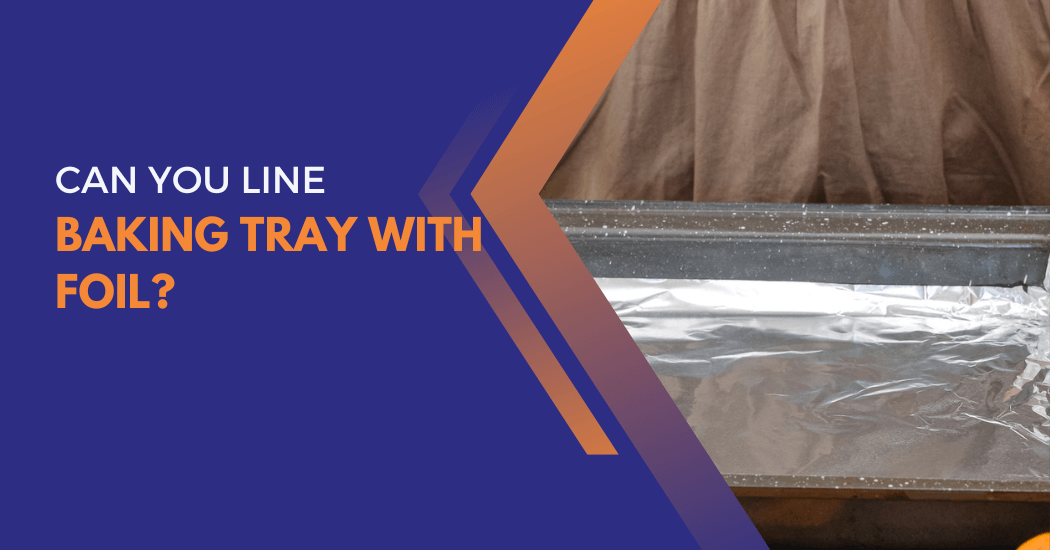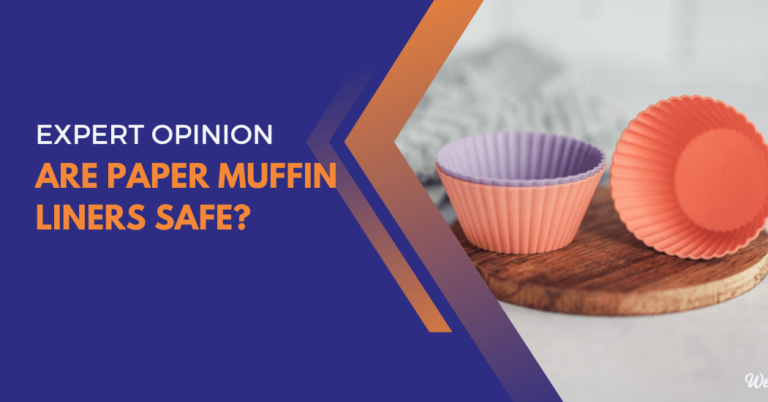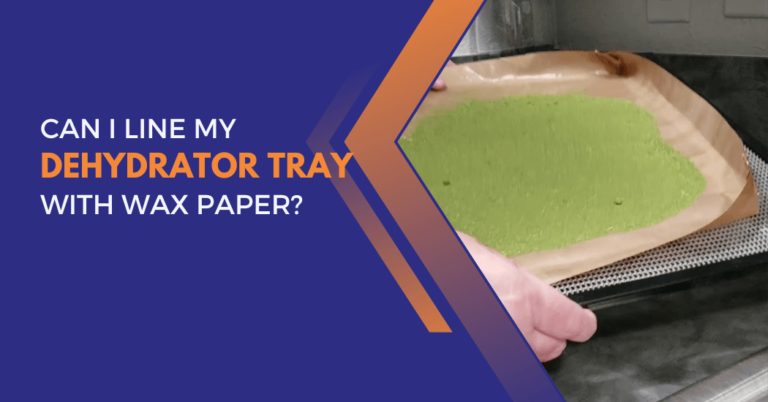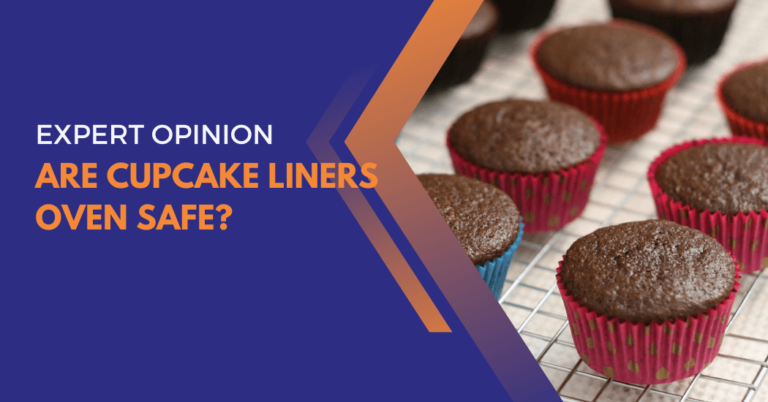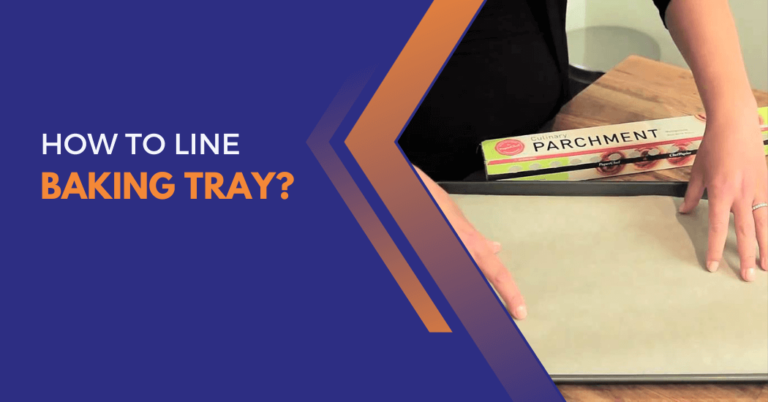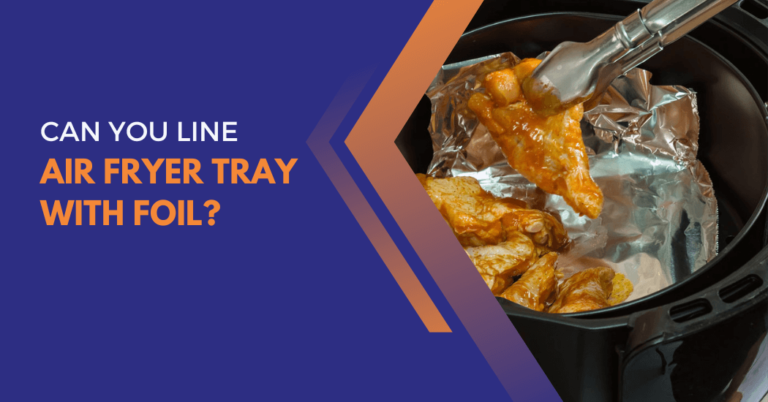Can you line a baking tray with foil?
When it comes to baking and cooking, the tools and materials you use can significantly impact the outcome of your culinary creations. One common question that often arises is whether you can line a baking tray with foil.
Foil is a versatile kitchen staple that can serve various purposes but is it a suitable substitute for traditional parchment paper or silicone mats when preparing baked goods?
In this article, we will explore the benefits, drawbacks and best practices of lining a baking tray with foil, helping you make informed decisions in your kitchen endeavors.
Line Baking Trays With Foil
Yes, you can line a baking tray with foil. Lining a baking tray with aluminum foil can be a useful kitchen technique, as it makes for easy cleanup and helps prevent food from sticking to the tray.
Here’s how to do it:
- Take a sheet of aluminum foil that is large enough to cover the entire baking tray, with some extra hanging over the edges for easy handling.
- Place the sheet of foil on the baking tray, ensuring it lies flat and covers the entire surface.
- Gently press the foil against the edges and corners of the tray to mold it to the shape of the tray.
- If you’re baking something that might stick, you can lightly grease the foil with cooking spray or a thin layer of oil. This step is optional but can be helpful.
- Once the foil is in place and prepared, you can then add your food to the tray and proceed with your baking recipe as usual.
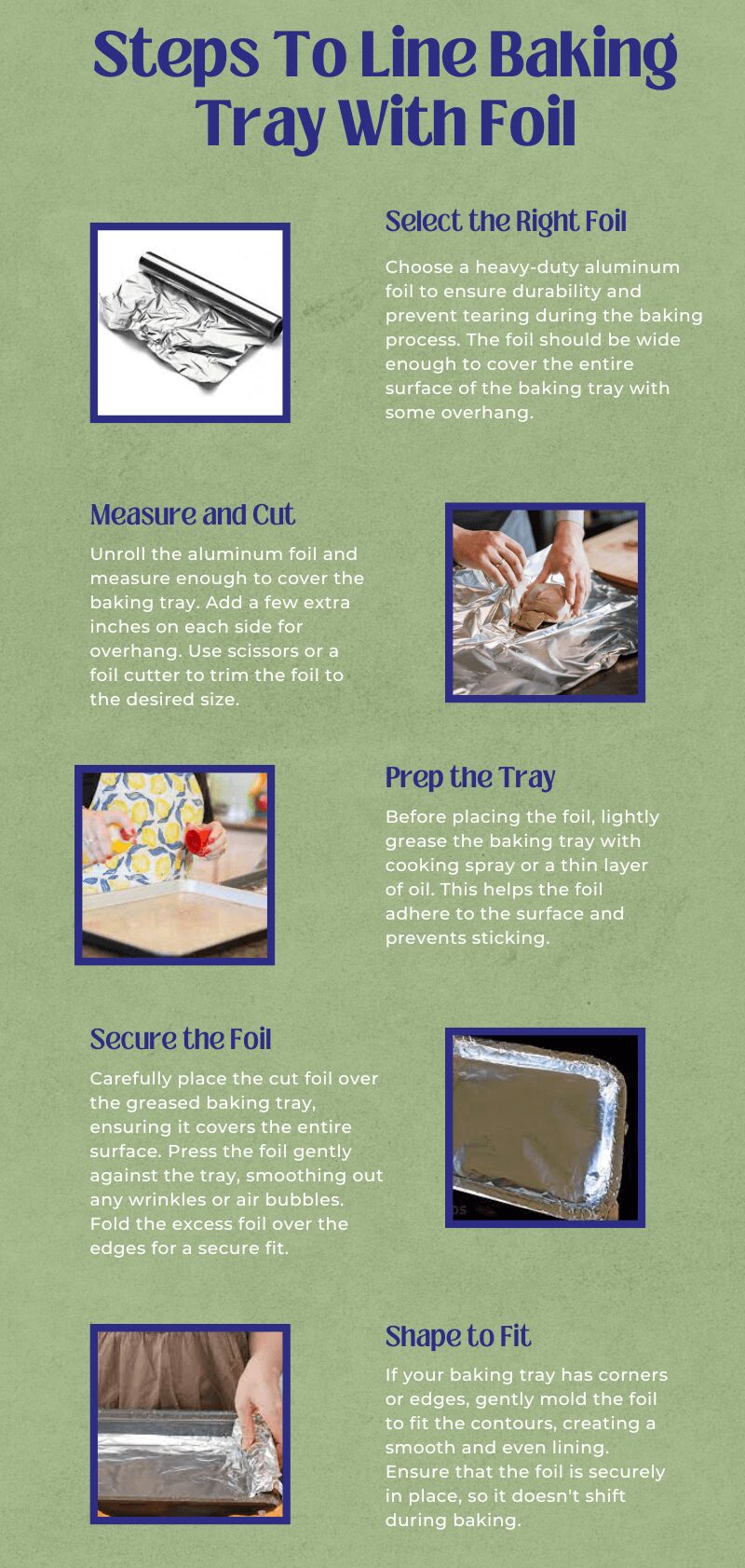
After you’re done baking, you can simply lift the foil and its contents out of the tray, making cleanup quick and easy. Just be careful when handling hot trays and foil to avoid burns.
Pros of lining a baking tray with foil
Lining a baking tray with foil has several benefits, including:
- Easy cleanup: Foil provides a non-stick surface that makes it easier to remove baked goods or roasted foods from the tray without sticking. This means minimal residue on the tray, reducing the need for intensive cleaning.
- Non-stick surface: When greased properly, foil acts as a non-stick surface, making it perfect for baking foods that tend to stick, such as cookies and pastries.
- Versatility: Foil can also be used for grilling and roasting, making it a versatile choice for various cooking methods.
- Even cooking: The reflective surface of foil can help with even heat distribution, ensuring your food cooks evenly.
- Reduces browning: Foil can be used to cover certain foods during baking, preventing excessive browning or burning on the top while allowing them to cook through.
- Healthier cooking: When cooking high-fat foods, you can use foil to create a raised platform that allows excess fat to drain away from the food, resulting in a slightly healthier preparation.
Overall, lining a baking tray with foil can simplify cooking and cleanup, making it a popular choice for many home cooks.
Drawbacks of lining a baking tray with foil
Despite its benefits, there are also some drawbacks to using foil as a liner for baking trays. These include:
- Environmental impact: Aluminum foil is not biodegradable and cannot be recycled once it comes into contact with food. This means it can quickly accumulate in landfills, contributing to pollution.
- Possible health risks: There is some concern that aluminum may leach into food when heated, potentially causing health issues over time. While the evidence is inconclusive, it’s still something to consider when using foil for cooking.
- Not suitable for acidic foods: Foil should not be used to line baking trays when preparing acidic foods, as the acid can react with the foil and affect the taste of your dish.
- Risk of tearing: Foil is not as durable as parchment paper or silicone mats, which means it can tear easily if you’re not careful when handling it or placing heavy items on it.
Tips and best practices for using foil as a liner
Foil can be a useful and versatile tool in the kitchen and using it as a liner is just one of its many applications.
Whether you’re cooking with foil on the grill, in the oven or even to line your baking sheets and pans, there are some tips and best practices that can help you get the most out of this handy kitchen essential.
- Avoid using foil for acidic foods: Acidic foods like tomatoes or citrus can react with the aluminum, leading to the foil breaking down and potentially leaching into the food.
- Use the right side of the foil: Believe it or not, there is a right and wrong side to the foil. In most cases, the shiny side should face out when used as a liner, as this reflects heat and helps cook food more evenly. The dull side is more porous and is better suited for covering dishes or wrapping food.
- Grease lightly: If you’re greasing the foil, make sure to do so lightly. Too much oil or cooking spray can cause your food to become greasy and affect the final outcome.
- Use heavy-duty foil: Heavy-duty aluminum foil is thicker and more durable than regular foil, making it less likely to tear or puncture.
- Be careful with oven temperatures: Foil is a heat conductor and can cause foods to cook faster. Keep a close eye on your oven temperatures and cooking times to avoid overcooking your meals.
- Use enough foil: When lining a pan, ensure you use enough foil to fully cover the surface. This will make clean-up easier and prevent any food from sticking to the pan.
- Do not use for high-heat cooking: Aluminum foil is not suitable for high-heat cooking methods, like broiling, as it can melt.
Remember, while foil can be a handy kitchen tool, it is always important to use it safely and responsibly to avoid any potential health risks.
Alternatives to foil for lining baking trays
While aluminum foil is a common choice for lining baking trays, several other options offer their unique advantages.
Here are some alternatives:
- Parchment paper: Parchment paper tray liner is a popular alternative to foil, known for its non-stick properties. It’s oven-safe and well-suited for baking goods like cookies, cakes and bread. However, it’s not ideal for high-heat cooking and moisture can make it lose its non-stick properties.
- Silicone baking mats: Durable and reusable, silicone baking mats have a high heat tolerance and provide an excellent non-stick surface. They’re more expensive than foil or parchment paper but can be used over and over, making them a cost-effective choice in the long run.
- Cooking spray: Instead of using any lining, you can simply apply a light layer of cooking spray to your baking trays. This method works well for certain recipes, especially when you want to achieve a crispy texture on the bottom of your baked goods.
- Baking or roasting racks: These metal racks sit on top of your baking tray, allowing for heat to circulate evenly around the food. Ideal for roasting or crisping, they also let fat and grease drip away from the food, making for a healthier meal.
- Non-stick baking trays: Some baking trays come with a non-stick coating, eliminating the need for liners. While convenient, these trays require careful handling to avoid scratching or damaging the non-stick surface.
- Oil or butter: You can also grease your baking trays with a small amount of cooking oil or butter. This method is commonly used for recipes like roasted vegetables and some casseroles.
Each of these alternatives offers different benefits and drawbacks, so the best choice will depend on your specific baking needs and preferences. Always remember to follow any specific usage instructions to ensure safety and the best results.
FAQ’s – Tray Lining with Foil
Is it safe to use aluminum foil in the oven?
Yes, it is generally safe to use aluminum foil in the oven as long as you follow some safety precautions.
Make sure to use the shiny side of the foil facing out and avoid using it for high-heat cooking methods like broiling. Also, be careful not to overcook your food as foil conducts heat and can cause food to cook faster than expected.
Does using foil affect the cooking time or temperature of my recipe?
Yes, using aluminum foil can indeed affect the cooking time and temperature of your recipe. Since aluminum foil is a good conductor of heat, it can cause food to cook faster than it would without foil.
This can potentially reduce the cooking time needed for your recipe. Moreover, because foil reflects heat, it might result in a higher effective cooking temperature. Therefore, when cooking with foil, it’s crucial to monitor your food closely to prevent overcooking.
Adjustments to cooking time or temperature might be necessary based on your oven and the particular dish you’re preparing.
Can I reuse the foil lining on a baking tray or should I dispose of it after each use?
It is generally recommended to dispose of the foil after each use, especially if it has come into contact with raw meats or other potentially harmful foods. For hygiene reasons, it’s best to start with a fresh piece of foil every time you bake.
However, if you only use the foil for dry goods like cookies or crackers and it is still in good condition, you can carefully fold and store it for re-use. Always make sure to clean and sanitize the foil properly before using it again to avoid any contamination.
Final Words
In conclusion, lining a baking tray with foil is a convenient and effective method for various cooking and baking purposes. It helps in reducing the mess and making cleanup easier, while also providing a non-stick surface for your food.
However, it’s important to consider the type of recipe and the specific instructions provided, as some dishes may require alternative methods or non-stick coatings. Overall, using foil to line a baking tray is a practical option that can simplify your cooking process and enhance your culinary experience.
